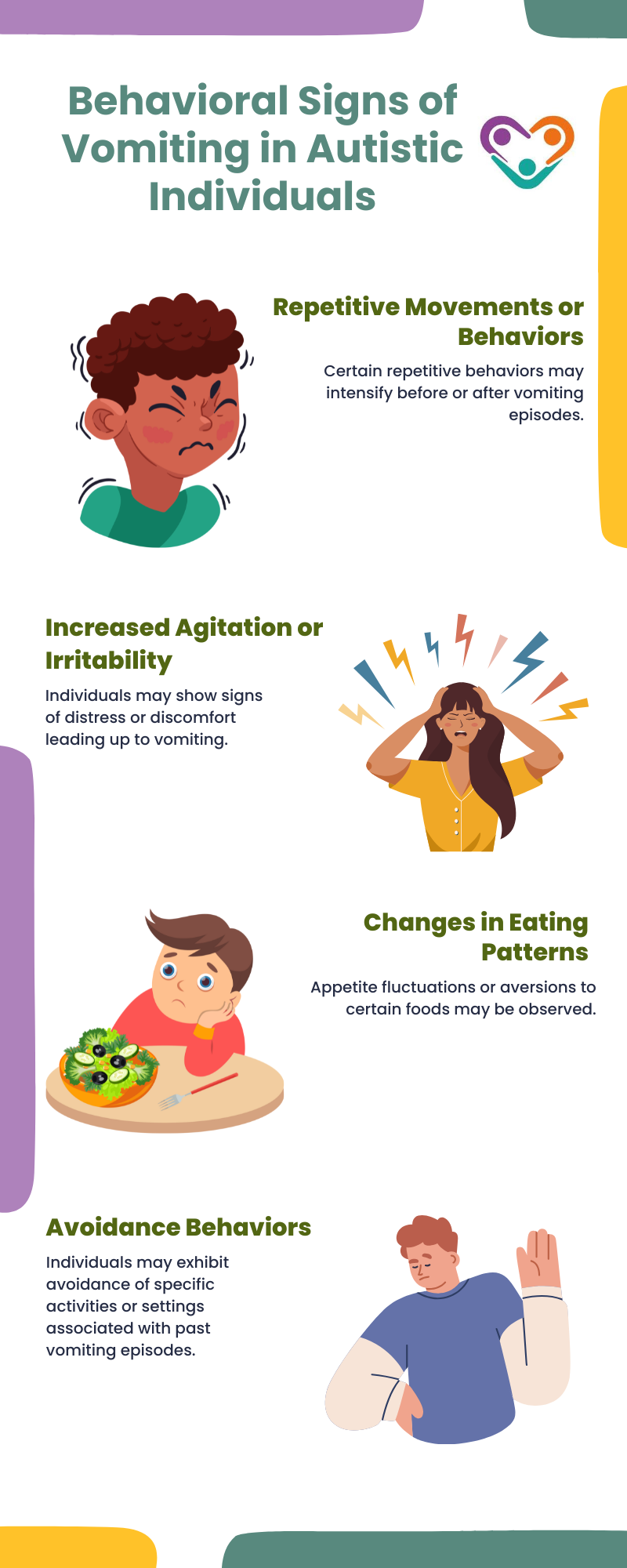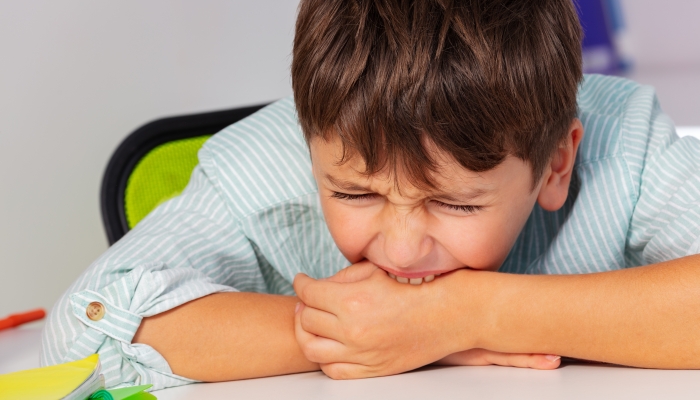Understanding behavioral triggers through Autism Therapist-backed methods
Understanding behavioral triggers through Autism Therapist-backed methods
Blog Article
Comprehending the Influence of Behavioral Autism on Every Day Life and Social Communications
You may not understand how deeply behavior autism affects day-to-day live and social communications. Individuals on the spectrum often browse a globe loaded with interaction hurdles and sensory overload. These obstacles can bring about aggravation and seclusion, impacting their partnerships and general wellness. Recognizing these nuances is crucial for cultivating supportive environments. What approaches can we execute to develop more significant connections and comprehensive spaces? The answers could surprise you.
Specifying Behavioral Autism and Its Attributes
Behavior autism, typically referred to as autism spectrum disorder (ASD), encompasses a range of conditions characterized by difficulties in social interaction, interaction, and recurring behaviors. You may observe that people with ASD typically battle to translate social signs, which can cause misunderstandings in conversations. They might find it tough to develop eye call or participate in small talk, making social scenarios really feel overwhelming.
Interaction difficulties can manifest in different ways, from delayed speech development to a preference for making use of less words. By identifying these qualities, you can foster an environment that promotes approval and urges reliable communication, helping individuals with autism prosper in their daily interactions.
The Range of Autism: Understanding Variability in Actions
Autism range problem (ASD) isn't a one-size-fits-all medical diagnosis; it differs extensively among people. You may observe that some people with ASD show light signs, while others might deal with a lot more substantial difficulties. This variability can manifest in habits, rate of interests, and sensory level of sensitivities. You may come across people who are very spoken and engage conveniently in discussions, while others may choose solitary tasks or communicate non-verbally.
Moreover, the means individuals with ASD react to sensory input can vary significantly; some may be overwhelmed by loud noises or intense lights, whereas others flourish in stimulating settings. The range likewise consists of differences in social interactions; some people may struggle to interpret social signs, while others browse social setups with family member simplicity. Comprehending this irregularity is important, as it assists you appreciate each person's distinct experience and dressmaker assistance to their particular needs, cultivating a more comprehensive setting for everybody.
Interaction Obstacles Dealt With by People With Autism
When you engage with individuals on the autism spectrum, you might notice their unique interaction difficulties. They frequently encounter difficulties with both spoken and nonverbal hints, which can impact their social interactions. Comprehending these barriers is necessary for fostering much better links and support.

Verbal Interaction Difficulties
Lots of individuals on the autism range experience verbal communication troubles that can significantly impact their day-to-day communications. You might locate it testing to share your thoughts, feelings, or requires plainly. This can result in disappointment for both you and those around you, as misconceptions occur. You may battle with launching conversations, maintaining a topic, or recognizing subtleties in speech. Frequently, you may favor utilizing straightforward language or repetitive expressions, which can limit your capability to engage in much deeper discussions. Your tone, quantity, or speed may not straighten with social expectations, triggering others to misinterpret your intentions. Recognizing these difficulties can help you and your assistance network create techniques to boost interaction and cultivate much better links with others in your day-to-day life.
Nonverbal Communication Obstacles
Spoken communication isn't the only difficulty people on the autism spectrum face; nonverbal communication barriers can be just as substantial. These challenges can lead to misunderstandings or misinterpretations of social hints, making communications feel confusing or frustrating. By dealing with nonverbal interaction, you can find approaches to enhance your social experiences and enhance your overall quality of life.
Social Interaction Impacts
Social communications can often really feel overwhelming due to the one-of-a-kind interaction difficulties encountered by individuals with autism. You could battle with interpreting social signs, making it difficult to comprehend mockery or body movement. This can bring about misunderstandings or awkward moments in conversations. Additionally, starting and preserving conversations may feel challenging, causing stress and anxiety in social circumstances. You might prefer organized environments, making spontaneous interactions unpleasant. It's additionally common to experience trouble in participating in little talk, which can impede developing new friendships. Acknowledging these difficulties can help you find techniques to improve interaction, such as exercising social abilities in secure settings or utilizing aesthetic aids - Autism Spectrum Therapies. Understanding your demands enables you to browse social interactions with higher self-confidence and simplicity.
Social Interaction and Partnership Building in Autism
While structure relationships can be challenging for people with autism, understanding their distinct perspectives and interaction designs can promote purposeful connections. You could discover that many people on the spectrum choose straight communication and might fight with social hints or tiny talk. By being simple in your communications, you can assist develop an atmosphere where they really feel comfortable.
Involving in shared passions can also serve as a bridge to much deeper connections. Whether it's a leisure activity, a preferred program, or a common interest, these common threads can open up doors to relationship.
Every Day Life Regimen: Navigating Difficulties and Methods
Navigating day-to-day life regimens can be specifically challenging for people with autism, especially when unexpected modifications take place. You could discover comfort in having an organized timetable, as it aids you anticipate what's next. When interruptions take place, it's regular to feel overwhelmed or anxious. To browse these difficulties, take into consideration applying aesthetic timetables or lists. These devices can supply clearness and confidence.
Developing a routine that consists of sensory breaks can additionally be valuable. This assists create an understanding setting.
Finally, practice mindfulness techniques to manage tension and stress and anxiety. Basic breathing workouts or grounding techniques can make a considerable difference. By integrating these methods, you can improve your everyday regimen and lessen interruptions, making life feel more convenient.
Staminas and Abilities of People on the Autism Range
Understanding everyday life routines is just one facet of the autism experience. Several individuals on the autism spectrum possess amazing staminas and dig this capacities that establish them apart.
Furthermore, your memory abilities typically radiate, especially in locations of passion. Autism Therapist. This knack for retaining info can make you a useful resource in fields like technology, science, or art. You may also display strong aesthetic reasoning, allowing you to imagine intricate principles and address troubles artistically
Additionally, your unique point of view on the globe can promote empathy and understanding Read Full Article in others, enriching social interactions. Embracing these toughness not just boosts your self-confidence yet likewise helps others value the diverse abilities you bring to the table.
Developing Inclusive Environments for Individuals With Autism
Developing comprehensive atmospheres for individuals with autism begins with creating sensory-friendly areas that deal with their distinct demands. You can likewise foster possibilities for social interaction, helping to construct friendships and connections. By making these modifications, you'll add to a much more welcoming ambience for everybody.
Creating Sensory-Friendly Spaces
While designing sensory-friendly rooms, it's vital to show on the special needs of individuals with autism. Start by selecting calming shades and soft lighting to develop a calming environment. When bewildered, integrate peaceful zones where individuals can recharge and pull back. You'll intend to reduce loud sounds and interruptions, using soundproof materials or white sound devices to aid maintain harmony. Consider responsive elements like soft fabrics or fidget-friendly items that can give comfort. Identify that rooms are flexible, permitting very easy rearrangement to fit various tasks. Finally, include aesthetic schedules or clear signage to help people browse the area with confidence. By attentively incorporating these elements, you can produce a welcoming environment that sustains sensory requirements and advertises total health.
Promoting Social Interaction Opportunities
Designing sensory-friendly rooms not only addresses specific comfort yet also establishes the stage for significant social communications among individuals with autism. Urge peer mentoring, coupling people with autism with supportive peers that can guide them through social circumstances. By applying these techniques, you can boost social opportunities, assisting people with autism develop friendships and strengthen their social abilities in a risk-free, inviting setting.

Often Asked Questions
Just How Can Pals Assistance Someone With Behavioral Autism?
You can support a close friend with behavior autism by holding your horses, listening actively, and valuing their boundaries. Take part in tasks they take pleasure in, connect openly, and produce a comfy atmosphere where they really feel valued and recognized.
What Resources Are Available for Moms And Dads of Kid With Autism?
You can check out different resources for moms and dads of youngsters with autism, consisting of support system, educational websites, and neighborhood community solutions. Linking with various other moms and dads can also supply beneficial understandings and shared experiences to aid browse obstacles.
Can Behavioral Autism Adjustment With Time?

Yes, behavioral autism can alter in time. see this page You might see changes in communication, social abilities, and actions as your kid expands. Early treatment and assistance typically play important duties in these developing modifications.
Just How Do Sensory Sensitivities Impact Life?
Sensory level of sensitivities can make day-to-day experiences overwhelming. You may fight with loud noises or intense lights, leading to stress and anxiety or avoidance. Finding atmospheres that accommodate your demands can significantly boost your convenience and overall day-to-day live.
What Are Usual Misconceptions Concerning Behavioral Autism?
You might think behavioral autism just affects interaction abilities, however it's more complicated. Many assume individuals lack compassion or intelligence, which isn't real. Comprehending these false impressions helps foster acceptance and support for those on the spectrum.
Behavior autism, typically referred to as autism range disorder (ASD), includes an array of problems defined by obstacles in social communication, interaction, and recurring behaviors.Social communications can commonly feel frustrating due to the distinct interaction difficulties encountered by individuals with autism.Creating sensory-friendly rooms not only addresses individual convenience yet also sets the phase for meaningful social communications among individuals with autism. Urge peer mentoring, coupling people with autism with encouraging peers who can direct them through social situations. By implementing these strategies, you can boost social possibilities, assisting individuals with autism construct relationships and enhance their social skills in a secure, inviting atmosphere.
Report this page